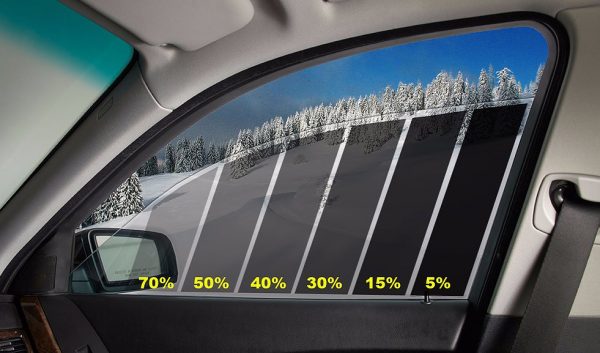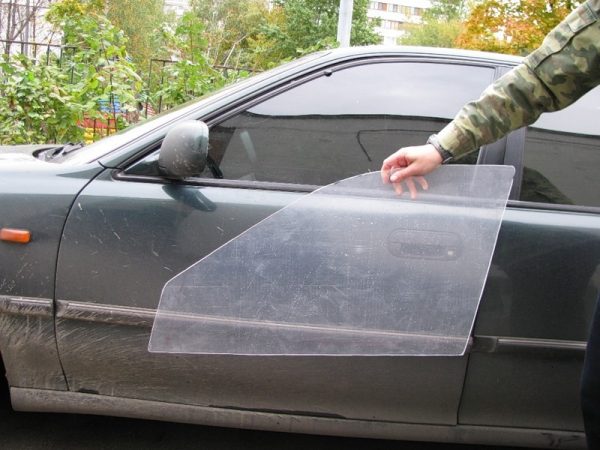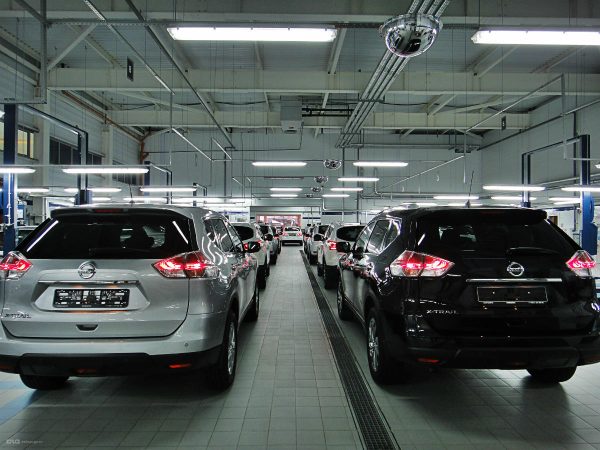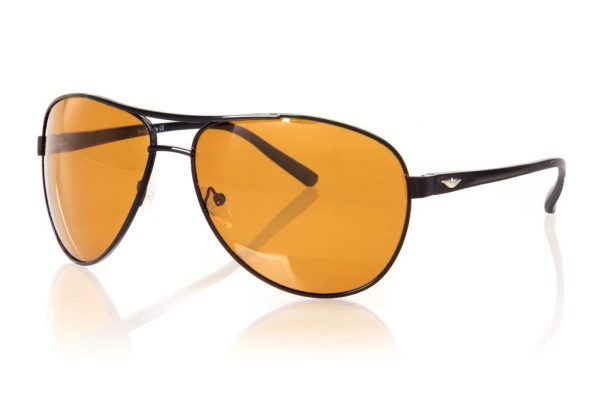
Car tinting
Content
- The concept and types of tinting
- Allowed types of tinting
- The procedure for controlling the light transmission of car windows
- Penalty for tinting
- Alternative penalties for tinting
- How many times a day can you be fined for tinting
- How to pay a fine and in what cases a “discount” of 50% is provided
- Legal alternatives to tinting
Tinting of windows and headlights of cars is widespread both in Russia and in neighboring countries. It not only protects the driver and passengers from the sun, and the car from overheating, but also helps to maintain a much-needed share of privacy for every person. In addition, tinting is often a bright decorative element that highlights the vehicle in a stream of others. For this reason, it is so important to understand the legal issues of handling tinting: what is allowed and prohibited, as well as what consequences a violation of the law will entail for a motorist.
The concept and types of tinting
Tinting is a change in the color of glass, as well as their light transmission properties. There are many different types of tinting, depending on the method of application and the goals pursued by the person.
In the most general way, tinting according to the installation method is divided into:
- for spray tinting. It is carried out by means of plasma spraying of the thinnest metal layer;
- for film tinting. It is produced by gluing a film of special polymeric materials, which adheres to its surface a few minutes after contact with glass;
- to factory tint. The desired effect can be achieved by adding special impurities in the manufacture of glass or the same plasma spraying, but done in a vacuum.
Most of the problems in practice arise with spray tinting. If it is produced in the garage of a local "craftsman", then it is extremely likely that under the influence of the temperature difference characteristic of Russia or road dust and sand microparticles, numerous scratches and chips will appear on the tinting layer.
Film tinting shows itself much better. Provided that the film itself is of high quality and glued according to the rules, it is possible to guarantee the long-term preservation of the darkening effect.

Separately, I would like to say about colored glasses that have a certain popularity among our fellow citizens. Contrary to popular belief, they are installed solely to improve the appearance of the car and do not have a tinting property.
Thus, car tinting has pros and cons. On the one hand, well-chosen tinting will increase the attractiveness of the car and protect the eyesight of the driver and passengers from bright sunlight, sparkling snow and headlights of passing vehicles. In addition, high-quality tinting helps to establish a comfortable microclimate inside the vehicle: in hot weather, it does not let in sunlight, and in cold weather, it does not allow heat to quickly leave the car space. Finally, the bonus of film tinting can be called a significant increase in the impact resistance of glasses, which can save lives in an accident.
On the other hand, cars with tinted windows are under more scrutiny from the traffic police. Leaving our country and traveling abroad with tinted glasses is also dangerous, since most countries have different requirements regarding the permissible percentage of light transmission. Finally, if you get into an accident on a car whose windows do not meet the established standard, then any insurance company will refuse to pay you compensation.
With all of the above in mind, it is up to you to decide whether to tint the windows on your personal car and which method is best to resort to.
Allowed types of tinting
The main document that determines the rules of the game for any technical re-equipment of a car in the Russian Federation and other countries that are members of the Customs Union (hereinafter - the Customs Union) is the Technical Regulations of the Customs Union "On the safety of wheeled vehicles" dated 9.12.2011. Along with it, the corresponding GOST 2013 also applies, which establishes the content of many terms used in the field of glass tinting, and some technical requirements that are mandatory in our and some other countries (for example, in Armenia, Tajikistan and others).

According to the Technical Regulations and GOST, the windows of vehicles must meet the following basic requirements:
- the light transmission of the windshield (windshield) must be at least 70%. In addition, such a requirement applies to other glasses that provide a driver's view of the rear and front;
- tinting should not distort the correct color perception of the driver. In addition to the colors of the traffic lights, white and blue should not be changed;
- glasses should not have a mirror effect.
The above provisions of interstate standards should not be taken as prohibitions on tinting. According to experts, clean factory automotive glass without tinting has a light transmission in the region of 85-90%, and the best tint films give 80-82%. Thus, tinting the windshield and front side windows is permitted within the legal framework.
Particular attention should be paid to the norm of paragraphs 2 and 3 of paragraph 5.1.2.5 of GOST, which allow the establishment of any possible tinting on the rear windows. That is, you can tint the rear windows of your car with a film with any light transmission you want. The only prohibition for these glasses is mirror films.
In addition, the so-called shading strip is allowed, which, in accordance with clause 3.3.8 of GOST, is any area of windshields with a reduced level of light transmission relative to the usual level. At the same time, it is important that its size complies with the established standards: no more than 140 millimeters in width in accordance with paragraph 4 of clause 5.1.2.5 of GOST and paragraph 3 of clause 4.3 of the Technical Regulations of the Customs Union.
The procedure for controlling the light transmission of car windows
The only way to determine the percentage of light transmission of automotive glass is to test it with a special taumeter. A police officer does not have the right to “by eye” determine whether the technical condition of the car windows meets the standards established in our country. A motorist should pay special attention to compliance with the research procedure, since any violation can lead to a distortion of the results of the check and, as a result, unreasonable prosecution. Even if the violation really took place and the windows are tinted too much, then if the traffic police officer does not follow the control procedure, you have the opportunity to effectively challenge the prosecution in court.
Video: unexpected tint measurement results
Conditions for the control of light transmission
Measurement of the light transmission of glass must be carried out under the following conditions:
- temperature from 15 to 25 °C;
- pressure from 86 to 106 kPa (kilopascals);
- relative air humidity from 40 to 80%.
Under conditions other than those specified, the authorized person is not entitled to conduct research. However, we note that the standard does not say a word about the time of day for the study, so the light transmission test can be carried out both during the day and at night.
Who and where has the right to control light transmission
According to Part 1 of Art. 23.3 of the Code of Administrative Offenses of the Russian Federation, the police authorities are considering cases of an administrative offense, expressed in the establishment of automobile windows with an unacceptable degree of tinting. In accordance with clause 6, part 2 of the same article of the Code of Administrative Offenses, light transmission control can be carried out by any traffic police officer with a special rank. The list of special ranks is set out in Article 26 of the Federal Law "On the Police".


Regarding the place of the audit, the legislation of the Russian Federation does not contain any mandatory rules today. Therefore, the control of the light transmission of car windows can be carried out both at a stationary traffic police post and outside it.
Features of the light transmission test procedure
In general, when performing a check, the following happens:
- First of all, the traffic police officer must measure the weather conditions and make sure that they comply with those set out in the state standard.
- The glass to be checked should then be cleaned of road dirt and dust, as well as any traces of moisture, as these affect the results of the study.
- After that, you need to adjust the taumeter so that in the absence of light it shows zero. (clause 2.4. GOST).
- Finally, insert the glass between the diaphragm and the taumeter and measure at three points.
Instruments used to test light transmission
At the moment, the traffic police are armed with taumeters:
- "World";
- "Blik";
- "Blik+";
- "Tonic".
Regardless of which model of the taumeter will be used when checking the glass of the car, for the cleanliness of the procedure, the traffic police officer must, if desired, demonstrate the device to the car owner so that the latter makes sure that the taumeter is sealed in accordance with the rules. Moreover, the driver must be presented with documents confirming the certification and suitability of the device for measurements (certificate of verification, etc.). Finally, the traffic police inspector must confirm his own competence.


If these simple rules are not observed, any evidence cannot be used to prove guilt, since it was obtained in violation of the requirements of the law.
Penalty for tinting
Administrative responsibility for offenses in the field of traffic is provided for in Chapter 12 of the Code of Administrative Offenses. As a sanction for the use of too dark car windows (front and front side windows), contrary to the technical regulations, a fine of 500 rubles is provided.
Find out how to remove tinting: https://bumper.guru/klassicheskie-modeli-vaz/poleznoe/kak-snyat-tonirovku-so-stekla-samostoyatelno.html
Amendments to the Code of Administrative Offenses in 2018
During most of the past year, the issue of amending the Code of Administrative Offenses of the Russian Federation with the aim of toughening the punishment for violations of glass light transmission norms was widely discussed. According to parliamentarians, a fine of five hundred rubles no longer deters drivers from violating the rules, so its size should be revised upwards. In addition, for a systematic violation of the rules of tinting, it is proposed to deprive the rights for up to three months.
I have drafted the corresponding bill. The fine has been increased for the first case from 500 to 1500 rubles. If this administrative offense is repeated, the fine will be equal to 5 thousand rubles.
Nevertheless, the bill promised by the deputy has not yet been adopted, which raises doubts about its future.
Video: about the planned amendments to the Code of Administrative Offenses for violating tinting standards
Penalty for tinted headlights
Car headlight tinting is also popular. As a rule, it is used to change the color of lighting fixtures to a more pleasing to the eye and suitable in color to the paint of the car. However, you should be aware that there are also mandatory rules for headlights, the violation of which can lead to administrative liability.
According to paragraph 3.2 of the Technical Regulations of the Customs Union, changing the order of operation, color, place of lighting devices is possible only if they comply with the rules from this regulation.
But a much more important document on this issue is the "List of malfunctions and conditions under which the operation of vehicles is prohibited." In accordance with paragraph 3.6 of Section 3 of the List, the installation of:
- in front - lighting devices with lights of any color other than white, yellow or orange, and retroreflective devices of any color other than white;
- at the rear - reversing lights and lighting of the state registration plate with lights of any color other than white, and other lighting devices with lights of any color other than red, yellow or orange, as well as retroreflective devices of any color other than red.


Responsibility for the installation of lighting devices that do not meet the mandatory requirements is provided for in Part 1 of Art. 12.4 and part 3 and 3.1 of Art. 12.5 of the Code of Administrative Offenses of the Russian Federation. Fines for tinting headlights for citizens up to 3 thousand rubles with confiscation of lighting devices. For officials, for example, mechanics who released such a vehicle - from 15 to 20 thousand rubles with confiscation of the same devices. For legal entities, for example, a taxi service that owns a car - from 400 to 500 thousand rubles with confiscation. For tinted rear lights, traffic police officers have the right to apply a 6 times smaller fine of 500 rubles.
Penalty for repeated violation
In accordance with paragraph 2 of part 1 of Art. 4.3 of the Code of Administrative Offenses of the Russian Federation, one of the circumstances aggravating responsibility is the commission of an offense repeatedly, that is, during the period when a person is considered subjected to administrative punishment. Article 4.6 of the Code of Administrative Offenses sets such a period at 1 year. It is calculated from the moment the decision on imposition of punishment comes into force. That is, such a homogeneous offense is repeated, which is committed within a year from the date of bringing to administrative responsibility.
Contrary to popular belief among motorists, the Code does not contain a special sanction for re-bringing to administrative responsibility for violating the rules of tinting. Moreover, the sanction for offenses for individuals is absolutely certain, that is, it contains only one option, so the inspector will not be able to “aggravate” the punishment. For officials and legal entities, the repetition of a violation will almost always mean the imposition of the maximum punishment provided for in the article.
The only way that traffic police inspectors resort to to more severely punish a car owner who repeatedly violates the requirements of the law on tinting is to be held liable under Part 1 of Art. 19.3 of the Code of Administrative Offenses of the Russian Federation. This will be discussed in more detail later in the article.
However, remember that the situation may change with the adoption of the promised bill, which was mentioned above.
Penalty for removable tinting
Removable tinting is a layer of colorless material on which a tinting film is attached. The whole structure is attached to the glass of the car, which allows, if necessary, to remove the tinting from the window as soon as possible.
The idea with removable tinting came to the mind of motorists and workshops as a reaction to the widespread fines from traffic police officers for applying blackouts that do not comply with the law. When stopping a vehicle with removable tinting, a motorist could get rid of the lining even before measuring on the spot and avoid punishment in the form of a fine.


Factory tint penalty
It is almost impossible to face a problem in which the car windows installed at the factory do not comply with the technical regulations of the vehicle. Most likely, there is a violation of the test procedure, a malfunction of the device or unsuitable climatic conditions.
Regular tinting, unlike any handicraft, is carried out in a factory on complex expensive equipment by professionals in their field. For this reason, factory tints are of high quality, damage resistance and light transmission. And also all plants operating in Russia or producing cars intended for our market are well aware of the current light transmission standards.
If you still find yourself in such an ambiguous situation, in which on paper the light transmission of factory glasses meets the standards, but in reality it doesn’t, then the only chance to avoid administrative responsibility is to refer to the absence of guilt. According to Part 1 of Art. 2.1 of the Code of Administrative Offenses, only a guilty act is considered an offense. By virtue of Art. 2.2 of the Code of Wine exists in two forms: intent and negligence. In this case, the intentional form of guilt obviously does not fit. And to justify negligence, the authorities will have to prove that you should have and could have foreseen the discrepancy between the tinting and the light transmission standard.


In any case, after that, you should contact the manufacturer or seller so that he brings the car in line with its technical characteristics.
More about VAZ-2107 glasses: https://bumper.guru/klassicheskie-modeli-vaz/stekla/lobovoe-steklo-vaz-2107.html
Alternative penalties for tinting
A fine and confiscation of lighting devices are not the only sanctions provided for by the legislation of the Russian Federation that an unfortunate driver may face.
Mandatory work
Compulsory work is the free performance of community service outside working hours. According to paragraph 6 of the Decree of the Government of the Russian Federation of 04.07.1997/XNUMX/XNUMX, public works can be carried out in the following areas:
- construction of motor roads, their repair and maintenance, laying of water, gas, sewer and other communications;
- carrying out agricultural reclamation (irrigation) works, works in forestry;
- procurement, processing and storage of agricultural products;
- housing construction, reconstruction of housing stock, social and cultural facilities, restoration of historical and architectural monuments, complexes, protected areas;
- maintenance of passenger transport, work of communication organizations;
- operation of housing and communal services and consumer services for the population;
- landscaping and landscaping, development of forestry, recreation and tourism areas;
- caring for the elderly, the disabled and the sick;
- ensuring the improvement and recreation of children during the holidays, maintenance of sanatorium and resort areas;
- organization of collection and processing of secondary raw materials and waste;
- holding social and cultural events (population census, sports competitions, festivals, etc.);
- other areas of work.


This type of punishment can be assigned to a car owner who has not paid a fine for illegal tinting within the period established by law. According to Part 1 of Art. 32.2 of the Code of Administrative Offenses of the Russian Federation, sixty days are given for payment of a fine from the date the decision enters into force, or seventy days from the date of its issuance, taking into account the time for appeal. If the owner of the car is stopped and traffic police inspectors find unpaid fines for tinting, they will be entitled to attract under Part 1 of Art. 20.25 of the Code.
The sanction of this article, among other things, includes up to 50 hours of compulsory work. According to Part 2 of Article 3.13 of the Code, compulsory work should not last more than 4 hours a day. That is, the maximum sentence will be served for about 13 days.
More about checking traffic police fines: https://bumper.guru/shtrafy/shtrafyi-gibdd-2017-proverit-po-nomeru-avtomobilya.html
Administrative arrest
The heaviest of the punishments provided for an administrative offense is administrative arrest. It is the forced isolation of a person from society for up to 30 days. Such a punishment lasting up to 15 days can be assigned to the car owner under Part 1 of Art. 19.3 of the Code of Administrative Offenses if he repeatedly committed a violation of driving a vehicle with the wrong tint.
How many times a day can you be fined for tinting
The legislation does not contain a direct answer to the question of the permissible number of fines, and practicing lawyers give conflicting answers. In fact, driving with a mis-tinted glass malfunction is a continuing offense. And if the car owner, after the first stop by the inspector, continues to participate in traffic, then he thereby commits a new offense. Thus, the driver can be fined an unlimited number of times during the day.
The only exception is the case in which, after a stop by an inspector and a fine, the driver carries out his movement in order to eliminate the violation in a specialized institution. In such a case, no fines may be imposed.


How to pay a fine and in what cases a “discount” of 50% is provided
It has already been shown above how important it is to pay administrative fines to the traffic police. Now it's time to consider the 4 most common payment methods:
- Through the bank. Not all financial and credit organizations work with the payment of fines. As a rule, only banks with state participation, such as Sberbank, provide this service. For a small fee, anyone with a passport and receipt of payment can pay the fine.
- Through electronic payment systems like Qiwi. The main disadvantage of this method is a rather significant commission, the amount of which is recommended to be specified when paying.
- Through the website of the traffic police. According to the car numbers and the certificate of the vehicle, you can check all the fines for the car and pay them without commission.
- Through the website "Gosuslugi". With your driver's license number, you can check all your unpaid fines, no matter how many cars you drive. Payment is also made without commission in a way convenient for you.
From January 1, 2016, in accordance with Part 1.3 of Art. 32.2 of the Code of Administrative Offenses of the Russian Federation, a 50% discount applies to the payment of a fine for illegal tinting of the traffic police. In order to legally pay only half of the amount, you need to meet the first twenty days from the date of imposition of the fine.
Legal alternatives to tinting
When tinting car windows, drivers, as a rule, have two main goals:
- sun protection;
- ensuring privacy in the car.
Depending on which goal is a priority for you, you can choose "substitutes" for tinting.
If your main interest is to hide from prying eyes in your own car, then clause 4.6 of the Technical Regulations of the Customs Union suggests the best permitted exit for you: special car curtains (curtains). There is a fairly wide selection of car shutters on the market. For example, you can install those that are controlled remotely using the remote control.
If your goal is to protect your eyes from the blinding sun and keep the road in sight, then special driving glasses are perfect for this. Moreover, you can use sun visors, which must be equipped with a vehicle.


Finally, in order to leave the car outside on a sunny day without fear of burnout and overheating of the passenger compartment, the driver can use special screens that reflect the sun's rays.
Car tinting performs almost the same functions as sunglasses for a person: it protects against harmful ultraviolet radiation and is a stylish addition to the image. However, unlike glasses, the tinting parameters are strictly regulated by the current legislation. Violation of these rules can lead to serious consequences up to administrative arrest. Also, be sure to keep abreast of changes in legislation and technical regulations. As the ancient Romans said, forewarned is forearmed.


